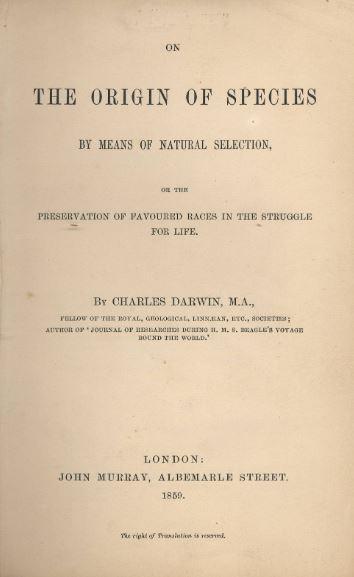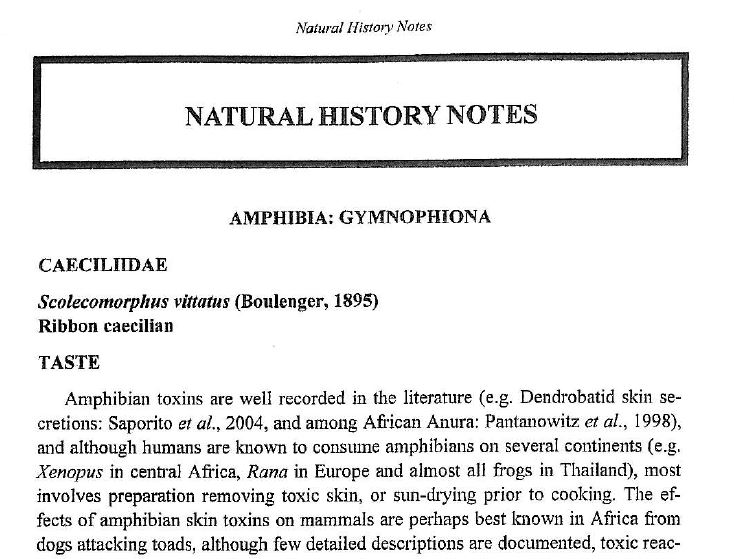Publishing Natural History Notes
Traditionally, all accounts of the world around us were natural history observations. Early biologists had other jobs and practiced their natural history in their spare time. Professional natural historians were very often landed gentry for whom actually earning a living wasn’t a daily occupation. Philosophical clubs where these gentlemen (as at the time they were usually men - a trend that has thankfully changed) met and discussed their observations, and sometimes published the talks in pamphlet form for general circulation. These observations are at the core of the first publications in the first ever journal (see herefor some juicy examples).
Accumulating natural history observations over time is a very powerful means of conducting science. However, this has largely fallen out of favour, due in part to the professionalisation of science and the proliferation of scientists who need to remain publicly accountable for their work. You can decide whether the demise of the monied classes that used their privilege to observe natural history was a good thing. But you can’t deny the power of the accumulation of many observations over a lifetime, which can be extremely important when you look at what cumulative observations can lead to, such as that of Charles Darwin and “The Origin of Species”. For a longer read on the interaction of ecology and natural history, have a look at this article in American Scientist.
In this series of blogs on writing and publishing, we have been mostly interested in hypothesis driven research (seehereandhere). But when you trace back the literature on which many of the original big ideas are founded (see here), they are almost always natural history observations. Hence, publishing natural history observations is important, and the recognition of this can be seen in the increasing number of journals that are prepared to accept manuscripts to accommodate these.
What are natural history notes?
Natural history notes are accounts of novel information, once-off or multiple/methodical observations and range from a short paper to a few structured paragraphs. There are some observations that you know do have value, but are not necessarily in your line of enquiry or even direct interest. They expand our natural history knowledge, specifically with biological information not broad or detailed enough for a paper. But by growing the records of these published observations, we increase our understanding of behaviour, biology, and ecology.
How do you decide whether your observation is worth a note?
Knowing what does and what doesn’t make a natural history note is probably related to your experience in the field, or down to how well read you are on a given topic. If you don’t know, and can’t easily find out (yes, google scholar is a good place to start -see here) whether or not your observation is important to record, then write and ask someone who would know. It is easy to communicate these days, and you might find someone that can help with relevant literature. You can always start by asking your advisor for some names.
Of course, you may know (as soon as you make the observation) that it is noteworthy. So in this case, what should you record?
What should you record?
- Time, date, location (preferably with GPS coordinates)
- The species involved (and any potential interactions with any other species)
- Environmental data (if you have it - remember that temperature and weather is very important for ectotherms)
- Context and a description
- A picture, video, or sound recording of the observation (if at all possible)
Be aware that especially if you are in the field, it may not be possible to get some of this information again. So it’s really important to save as much as possible, even if you don’t use it all.
Older biologists will likely tell you that there is no substitute for writing everything down in a field notebook. Actually, there is and you can record everything digitally, including dictating field notes. It’s then up to you to make sure that this is all backed up so that you don’t lose anything and light the touchpaper on the smug notebook holding oldies. Yes, your phone can do all this (and more), but you do need to keep your phone safe.
Whatyou must not do, is to try to remember anything in your head! This simply won’t work. It may be several years before you realise the importance of your observation, and by this time your head will have erased all of the important details. Notebooks are more fun to go back through, especially when they preserve some of your feelings at the time and often (for me) squashed invertebrates between the pages, that remind you of the genuine atmosphere. It becomes a kind of professional diary, and likely something that you’ll only ever be able to share with your future self. But it’s nice to share!
Where to publish your natural history note?
As you should know by now, my preference is for you to publish your work somewhere where it can be found by others. If at all possible, submit to something indexed in Web of Science or Scopus (see why here).
Here are some ideas of places where you could submit your natural history note. Note that not all are equivalent, and you’ll only get very important observations into American Naturalist or Ecology, while nearly anything goes in Biodiversity Observations! In every case, you’ll need to consult the instructions to authors and make sure that your observation has what it takes.
|
Indexed in Web of Science / Scopus |
Not indexed |
|
(within Ecology) |
|
Once you’ve decided where you want to submit, I suggest that you download some of the published observations that will give you a good idea of the style that you will need to use.
What needs to be in your natural history note?
Rather like any scientific publication, your natural history note needs to have some context for the observation. If the total note is only a paragraph, then this might be only a sentence or two. But if your contribution is going to be several pages, then you’ll likely need several paragraphs that provide enough background information for the reader to know why your observation is significant. Include sufficient citations to previously published records where relevant.
The observation itself!Try to include as much of the information that you collected at the time as possible. The journal will likely have specific ways in which each of these is to be provided, so make sure that you follow their instructions. You can include links to videos or recordings that are archived somewhere formally (either at the journal or there are plenty of collections for this stuff). Most journals will allow you to publish a picture if you have one, and for some you will have to have a picture in order to publish.
Lastly, provide some discussion about why you think the observation is significant. Does it provide new insight into this taxon? Does it allow you to make management recommendations? What further lines of enquiry should be made now that this observation has been recorded? How does your observation fit into the bigger picture?
Some examples
I have published a few natural history observations (certainly not as many as Martin Whiting), and I will publish more. I store these in a special place (see here).
An example of a favorite isMeasey & Turner (2008):
This is the amusing tale of what happened when Adrew Turner decided to put a live caecilian into his mouth! Yes, sometimes your friends do odd things to amuse you, and it kinda backfires. Andrew suffered greatly, and as soon as he started reacting I got out my notebook and started recording his symptoms. I sat and watched him for several hours as he spat repeatedly out of the taxi window on our way back to the hotel. Yes, there was great mirth in the entire episode, but I knew immediately that there was important significance as there had been no publications on the subject of caecilian toxins at that time.
[once I’m back in the office I’ll upload an image of the notebook page]
According to Google Scholar, this note has been cited 3 times, so it wasn’t all for nothing! However, I still regret not having got to my camera fast enough to get the picture of Andrew with a caecilian in his mouth!
Thanks James!
Many thanks to James Baxter-Gilbert who originally gave a presentation for the MeaseyLab that inspired this blog post. James also edited this post - so thanks again!


